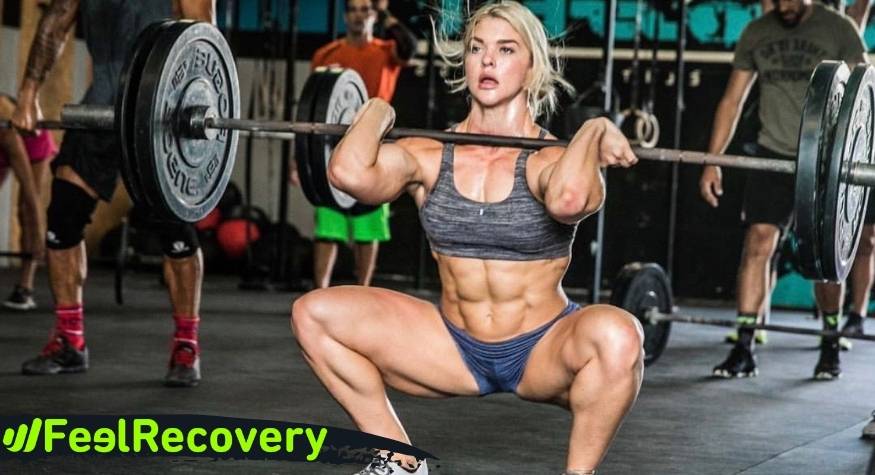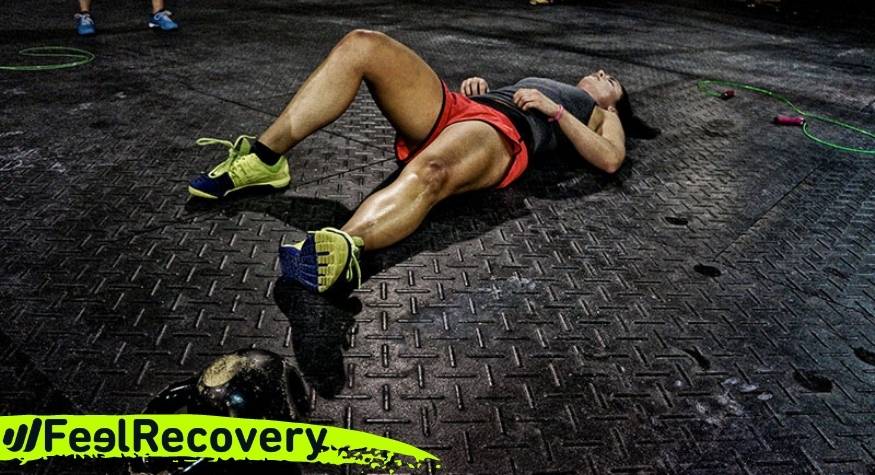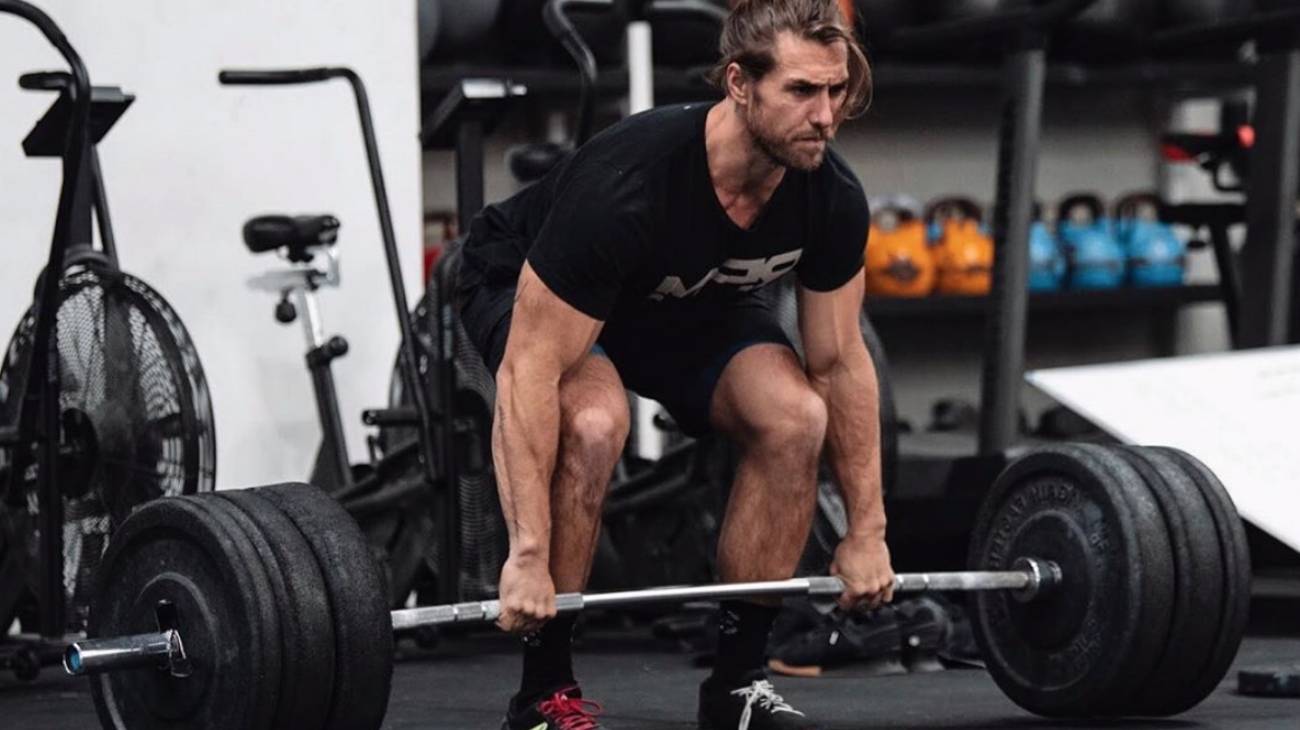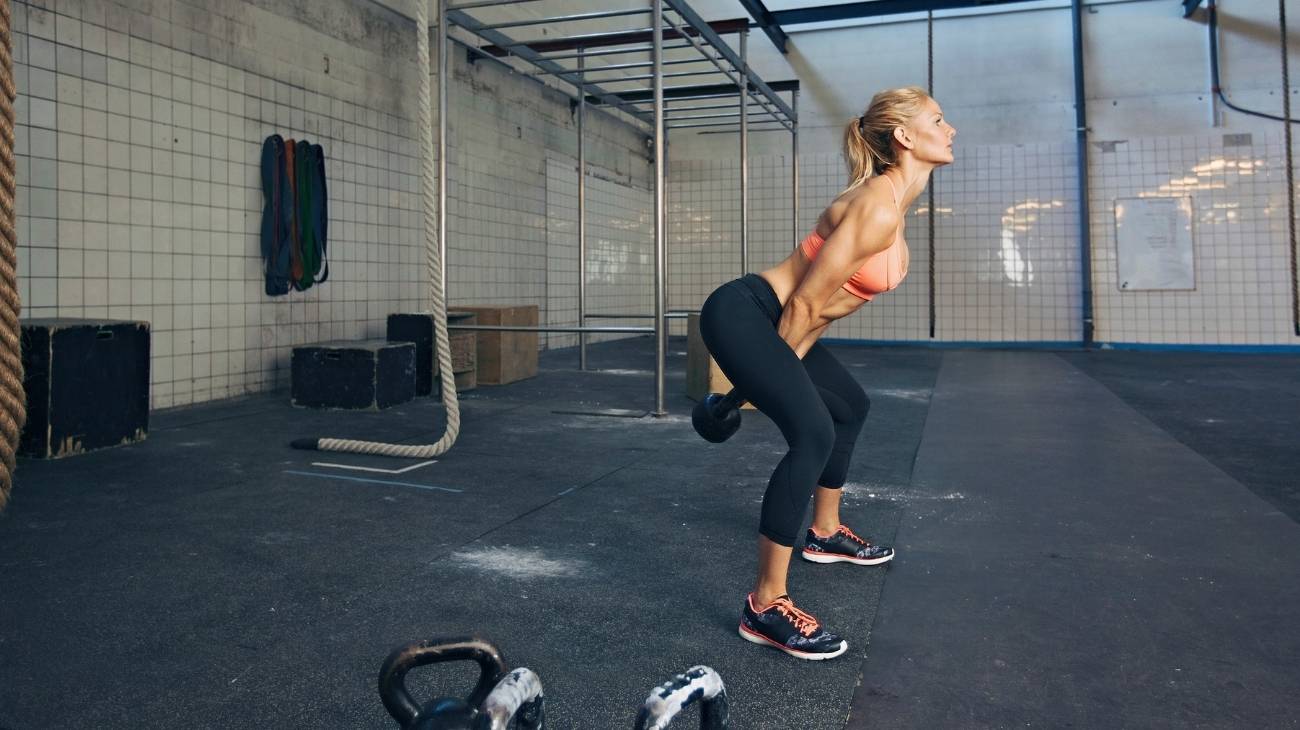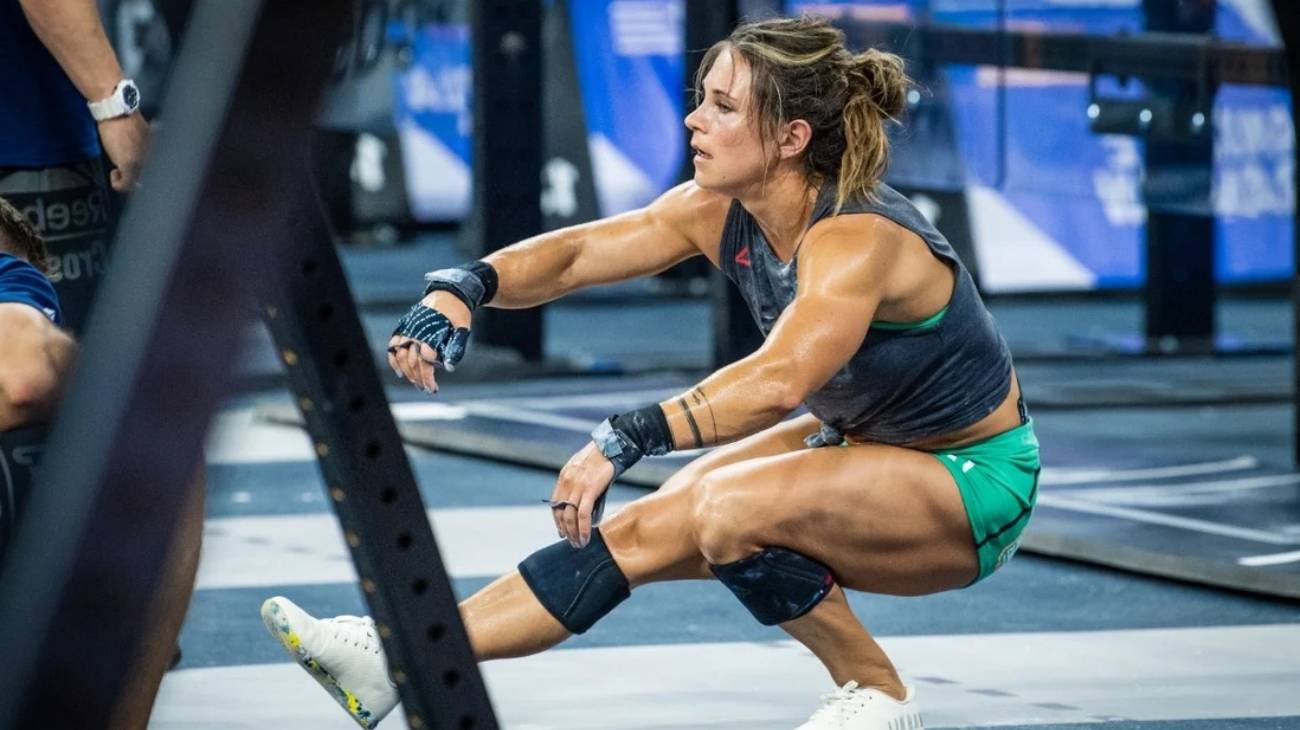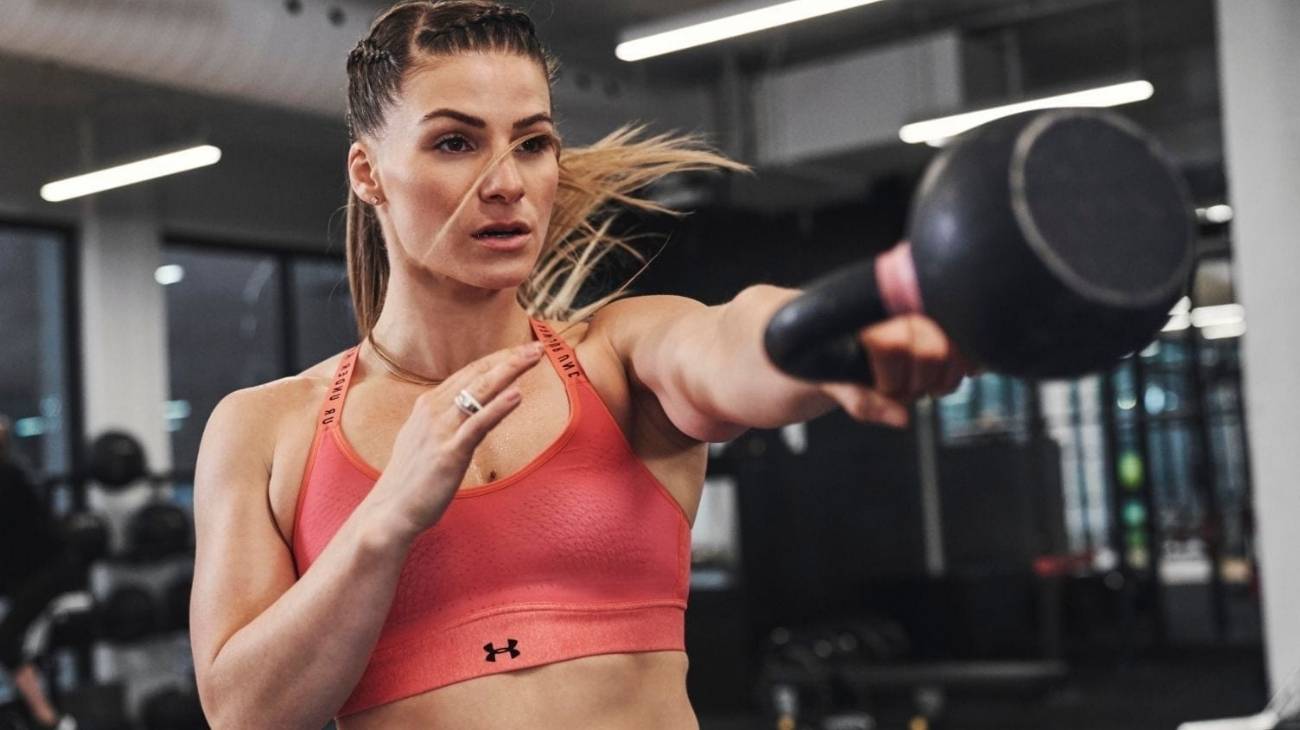In the last years the increase in popularity of Crossfit has been incredible, because many people have adopted this style of training. This discipline consists of performing a series of exercises that force the body to reach its maximum point.
As it is an activity where the correct technique is paramount to perform the movements, it is common to see that a considerable number of practitioners suffer injuries. In this article you will find out what they are and how to prevent them
What are the most common types of injuries when training for Crossfit?
When we talk about Crossfit, we are referring to functional training, which is why it is often thought that it does not entail any physical risk. But we should not overlook the fact that the exercises to be performed are very physically demanding, gymnastic activities and weightlifting are also on the agenda, to name but a few.
Shoulder injuries
They occur mostly during weightlifting exercises, which are very often performed without any professional supervision, without correct techniques or without good dosage. This type of injury is often contracted due to excessive weight loading or inadequate warm-up.
- Rotator cuff tendonitis: this is an inflammation of the tendons that connect the arm and the head of the humerus to the torso. These tendons are the ones that allow the arm to rotate and when they are subjected to a lot of wear and tear they tend to become inflamed, which causes acute pain and above all limits the movement of the joint. It is a very common injury in crossfit as these tissues are always used in weightlifting or push-ups.
- Shoulder bursitis: this is an inflammation of the subacromial bursa of the shoulder as a result of an increase in the production of synovial fluid it contains. This generates acute pain in the joint that requires almost total immobilisation and the use of painkillers and anti-inflammatory drugs to control the pain. As in the previous case, it can be caused by lifting weights or pulling ropes with poor technique.
- Shoulder sprain: although uncommon in crossfit, a training accident can cause the joint to move improperly and the ligaments and soft tissues of the joint to overextend so that tears occur that can be partial or total, requiring immobilisation and in the worst cases even surgery to repair the damage.
Back injuries
Back and lower back injuries are the most common injuries to be observed in beginners. The pain is usually caused by the fact that the back is not strong enough or ready to lift heavy weights.
- Lumbar osteoarthritis: this is a degenerative disease caused by the wear and tear to which the cartilage in the lumbar region is subjected, which limits the mobility of the area and causes a lot of pain even when walking. Dead weight lifting with poor technique wears down this tissue, which over the years causes this ailment.
- Sciatica: when the nerve roots in the lower back (or lumbosacral spine) become compressed, inflamed or irritated, they generate various ailments that limit the athlete's performance in crossfit. This can happen from lifting more weight than we are capable of when performing barbell squats, or the popular Hip Thrust. Although it is a delicate area, it is usually solved with pharmacological treatment accompanied by physiotherapy.
- Low back pain: this ailment refers to pain in the lower back that can be caused by various reasons. The most common is when performing dead weight or Hip Thrust lifts with more weight than we can lift, causing the vertebral joints in the area to distend and inflammation to develop.
Knee injuries
Knee injuries are usually caused by excessive stretching exercises or poor movement patterns. Worn or torn meniscus, torn cruciate ligaments and tendonitis due to excessive weight bearing are the most common injuries to suffer if you don't have the correct technique.
- Torn cruciate ligaments: the knee has four ligaments including the anterior and posterior cruciate ligaments, two essential tissues for the mobility of the knee. When one of these is torn, there is immediate swelling and severe pain. This can be caused by an accident during an intense training session, such as falling badly after a routine involving jumping or short, explosive movements.
- Patellar tendonitis: occurs when the patellar tendon is subjected to a lot of wear and tear, which causes it to become inflamed and causes discomfort in the joint. It is usually solved with rest and, if the pain is acute, with painkillers. The constant use we make of this joint during leg training sessions is the main culprit.
- Bursitis: in the knee we also have a bursa that absorbs the impact of the movements we make with our legs during intense training circuits. The symptoms are acute pain when trying to move the joint and some limitation in walking, so the solution is usually again rest and some drugs to control the pain.
Best products for Crossfit injury recovery
Bestseller
-
2 Calf Compression Sleeve (Black/Gray)
£17,50 -
2 Calf Compression Sleeve (Green/Navy)
£17,50 -
2 Calf Compression Sleeve (Pink/Bordeaux)
£17,50 -
2 Elbow Compression Sleeve (Black/Gray)
£17,50 -
2 Elbow Compression Sleeve (Green/Navy)
£17,50 -
2 Elbow Compression Sleeve (Pink/Bordeaux)
£17,50 -
2 Knee Compression Sleeve (Black/Gray)
£17,50 -
2 Knee Compression Sleeve (Green/Navy)
£17,50 -
2 Knee Compression Sleeve (Pink/Bordeaux)
£17,50 -
2 Thigh Compression Sleeve (Black/Gray)
£17,50 -
2 Thigh Compression Sleeve (Green/Navy)
£17,50 -
2 Thigh Compression Sleeve (Pink/Bordeaux)
£17,50 -
Acupressure Mat and Pillow (Black/Gray)
£44,95 -
Acupressure Mat and Pillow (Green/Navy)
£44,95 -
Acupressure Mat and Pillow (Pink/Bordeaux)
£44,95 -
Acupressure Pillow (Black/Gray)
£21,52 -
Acupressure Pillow (Green/Navy)
£21,52 -
Acupressure Pillow (Pink/Bordeaux)
£21,52 -
Back Support Belt (Black)
£29,95 -
Back Support Belt (Green)
£29,95 -
Back Support Belt (Pink)
£29,95 -
Foot Massage Roller for Plantar Fasciitis (Black)
£17,50 -
Foot Massage Roller for Plantar Fasciitis (Green)
£17,50 -
Foot Massage Roller for Plantar Fasciitis (Pink)
£17,50 -
High Density Foam Roller for Muscle (Black/Gray)
£24,95 -
High Density Foam Roller for Muscle (Green/Navy)
£24,95 -
High Density Foam Roller for Muscle (Pink/Bordeaux)
£24,95 -
Ice Massage Roller Ball (Black)
£34,95 -
Ice Massage Roller Ball (Green)
£34,95 -
Ice Massage Roller Ball (Pink)
£34,95 -
Microwave Wheat Bag for Back Pain Relief (Extra Large) (Hearts)
£25,50 -
Microwave Wheat Bag for Back Pain Relief (Extra Large) (Oxford)
£25,50 -
Microwave Wheat Bag for Back Pain Relief (Extra Large) (Sport)
£25,50 -
Microwave Wheat Bag for Neck & Shoulder Pain Relief (Hearts)
£21,50 -
Microwave Wheat Bag for Neck & Shoulder Pain Relief (Oxford)
£21,50 -
Microwave Wheat Bag for Neck & Shoulder Pain Relief (Sport)
£21,50 -
Microwave Wheat Bag for Neck Pain Relief (Hearts)
£17,50 -
Microwave Wheat Bag for Neck Pain Relief (Oxford)
£17,50 -
Microwave Wheat Bag for Neck Pain Relief (Sport)
£17,50 -
Microwaveable Wheat Bag for Pain Relief (Hearts)
£17,50 -
Microwaveable Wheat Bag for Pain Relief (Oxford)
£17,50 -
Microwaveable Wheat Bag for Pain Relief (Sport)
£17,50 -
Pack 2 in 1: Foam Roller High + Soft Density (Black/Gray)
£24,95 -
Pack 2 in 1: Foam Roller High + Soft Density (Green/Navy)
£24,95 -
Pack 2 in 1: Foam Roller High + Soft Density (Pink/Bordeaux)
£24,95 -
Shoulder Support Brace (Black)
£21,95 -
Shoulder Support Brace (Green)
£21,95 -
Shoulder Support Brace (Pink)
£21,95 -
Soft Density Foam Roller for Recovery (Black)
£24,95 -
Soft Density Foam Roller for Recovery (Green)
£24,95 -
Soft Density Foam Roller for Recovery (Pink)
£24,95 -
Sport Compression Socks (1 Pair) (Black/Gray)
£17,50 -
Sport Compression Socks (1 Pair) (Green/Navy)
£17,50 -
Sport Compression Socks (1 Pair) (Pink/Bordeaux)
£17,50 -
Trigger Point Massage Stick (Black)
£12,95 -
Trigger Point Massage Stick (Green)
£12,95 -
Trigger Point Massage Stick (Pink)
£12,95
How to prevent injuries when practicing Crossfit?
The most important thing and the first thing to take into account to avoid any type of injury is to warm up correctly before high intensity activities, as well as stretching the body regularly.
It has been reported that around 75% of the people who practice this activity have suffered injuries and approximately 5% have needed surgical interventions, because of this it is recommended:
- Warming up well: In any sport, muscle pre-conditioning or warm-up is as essential and important as the training itself. During the warm-up, the aim is to increase body temperature and blood flow by performing movements that involve a good number of joints and muscles. In this way the body will feel more capable when starting a demanding exercise and the risk of injury will be reduced.
- End workouts with a cool down: In the same way that we stretch the body before training, it is advisable to do the same once the exercise session is over. In this way, the body will gradually lower its heart rate so that the muscles are decongested and the blood flow gradually returns to normal.
- Good nutrition and hydration: without going into dietary details, it is important that your daily calorie intake matches the amount of training you usually do, so that your body is always able to cope with it. Unless you intend to lose weight, each day you should consume at least 2000 calories if you train for 30 minutes or less, and about 2200 if you train between 30 minutes and an hour. Hydration is also essential and although there is no exact measure you should drink water whenever you feel thirsty and at least 1 litre during training.
- Improve your physical condition: Crossfit itself is an activity to improve your physical condition, part of the exercises practiced in this sport are performed with your own body weight, it is vital to perform the exercises with good technique and start with low weight and many repetitions to gain strength and endurance as we progress in the discipline.
- Sports massage: many people think this is a luxury but in reality it is a necessity. After subjecting the body to so much stress during the crossfit circuits, it is essential that we dedicate at least twice a week to a sports massage to relax the muscle fibres and release all the tension accumulated during the week.
- Use of hot and cold therapies: In the field of physiotherapy, these therapies are used to regulate and optimise the muscle regeneration process and help the body maintain its homeostasis. In sport, these processes are important in the field of injury prevention, where cold and heat effect creams are very useful. Cooling or cold creams help to lower the temperature, are analgesic and relieve pain. On the other hand, heat effect creams provide an increase in the temperature of the area where they are applied, dilating the blood vessels and thus achieving a greater blood flow. It is recommended to use them before workouts while cooling creams should be used at the end of the exercise session.
- Use of compression garments: this is a type of tight-fitting garment that exerts pressure on the muscles. Such pressure optimises blood circulation during training and also promotes post-exercise recovery while resting. It works in such a way that it minimises the vibrations and the ripple effect that the muscles follow during training, which significantly reduces the risk of injury. In crossfit we can use wrist braces, compression sleeves, belts, girdles and even compression stockings to prevent injuries.
- Use of acupressure therapies: This therapy is very useful to treat acute and chronic pain, in such a way that it helps to enhance physical performance and strengthens the mental part. Therapies vary depending on the type of injury the person suffers and the area where it occurs. Its benefits are notorious and it helps recovery in a shorter period of time.
- Use of thermotherapy and cryotherapy: Thermotherapy consists of applying heat for therapeutic purposes, a technique widely used by professionals as it offers numerous benefits. It prepares the muscles by interrupting the pain transmission process, thus avoiding the risk of suffering an injury. Cryotherapy, on the other hand, aims to apply cold. It is currently a very interesting concept and has become very popular due to its widespread use, both in Crossfit and in other sports. Among the benefits it brings we can say that it stimulates the muscles and favours muscle recovery by reducing blood flow.
- Use of proper equipment: Being aware of the different devices that are used to train in Crossfit, and being instructed to use them in the most responsible way, will allow you not to feel out of place and insecure when training. Using them properly will help you avoid potential injuries caused by the imprudent use of these elements
How to apply the RICE therapy to treat first aid injuries in Crossfit?
R.I.C.E. stands for rest, ice, compression and elevation. Doctors may recommend this method to help reduce pain and swelling after surgeries or injuries such as sprains, strains, bruises, sprains and other injuries.
The basic steps of this therapy are listed below:
- Protection: protect the affected area to prevent the injury from worsening or other associated injuries, especially in the first few minutes after suffering an injury caused by trauma or sprain.
- Rest: this consists of not using or limiting the use of the affected body part as much as possible, thus allowing time for recovery and avoiding long-term damage.
- Ice: Cold helps to lower pressure and swelling, which in turn relieves pain. It is recommended to apply ice to the injured area for about 15 minutes every 2 hours for 1 to 3 days.
- Compression: use of bandages such as compression wraps, which refers to applying pressure to the area of injury to prevent swelling and keep the injury stable
- Elevation: elevating the injured body part above the heart, reducing blood flow and decreasing swelling.
References
- Klimek, C., Ashbeck, C., Brook, A. J., & Durall, C. (2018). Are injuries more common with CrossFit training than other forms of exercise?. Journal of sport rehabilitation, 27(3), 295-299. https://journals.humankinetics.com/view/journals/jsr/27/3/article-p295.xml
- Alekseyev, K., John, A., Malek, A., Lakdawala, M., Verma, N., Southall, C., ... & Ross, M. (2020). Identifying the most common CrossFit injuries in a variety of athletes. Rehabilitation process and outcome, 9, 1179572719897069. https://journals.sagepub.com/doi/pdf/10.1177/1179572719897069
- Ángel Rodríguez, M., García-Calleja, P., Terrados, N., Crespo, I., Del Valle, M., & Olmedillas, H. (2022). Injury in CrossFit®: a systematic review of epidemiology and risk factors. The Physician and Sportsmedicine, 50(1), 3-10. https://www.tandfonline.com/doi/abs/10.1080/00913847.2020.1864675
- Hopkins, B. S., Cloney, M. B., Kesavabhotla, K., Yamaguchi, J., Smith, Z. A., Koski, T. R., ... & Dahdaleh, N. S. (2019). Impact of CrossFit-related spinal injuries. Clinical journal of sport medicine, 29(6), 482-485. https://journals.lww.com/cjsportsmed/Abstract/2019/11000/Impact_of_CrossFit_Related_Spinal_Injuries.8.aspx
- Hak, P. T., Hodzovic, E., & Hickey, B. (2022). The nature and prevalence of injury during CrossFit training. The Journal of Strength & Conditioning Research. https://journals.lww.com/nsca-jscr/abstract/9000/the_nature_and_prevalence_of_injury_during.97557.aspx
- Meyer, J., Morrison, J., & Zuniga, J. (2017). The benefits and risks of CrossFit: a systematic review. Workplace health & safety, 65(12), 612-618. https://journals.sagepub.com/doi/pdf/10.1177/2165079916685568
- da Costa, T. S., Louzada, C. T. N., Miyashita, G. K., da Silva, P. H. J., Sungaila, H. Y. F., Lara, P. H. S., ... & Arliani, G. G. (2019). CrossFit®: Injury prevalence and main risk factors. Clinics, 74. https://www.scielo.br/j/clin/a/4FtbB77jTQtQgPmt4KrBjJy/
- Montalvo, A. M., Shaefer, H., Rodriguez, B., Li, T., Epnere, K., & Myer, G. D. (2017). Retrospective injury epidemiology and risk factors for injury in CrossFit. Journal of sports science & medicine, 16(1), 53. https://www.ncbi.nlm.nih.gov/pmc/articles/PMC5358031/
- Tafuri, S., Salatino, G., Napoletano, P. L., Monno, A., & Notarnicola, A. (2018). The risk of injuries among CrossFit athletes: an Italian observational retrospective survey. The Journal of sports medicine and physical fitness, 59(9), 1544-1550. https://europepmc.org/article/med/30421876
- Weisenthal, B. M., Beck, C. A., Maloney, M. D., DeHaven, K. E., & Giordano, B. D. (2014). Injury rate and patterns among CrossFit athletes. Orthopaedic journal of sports medicine, 2(4), 2325967114531177. https://journals.sagepub.com/doi/pdf/10.1177/2325967114531177


































































































